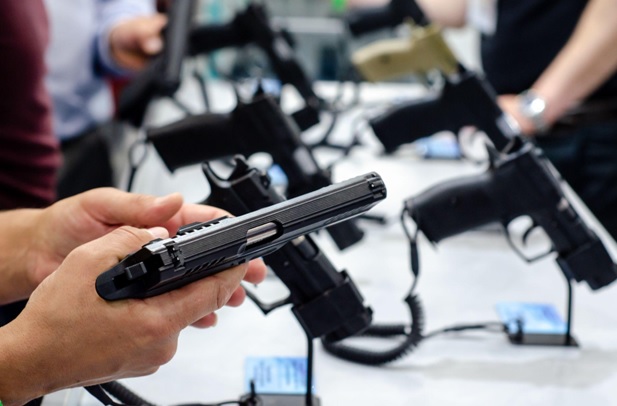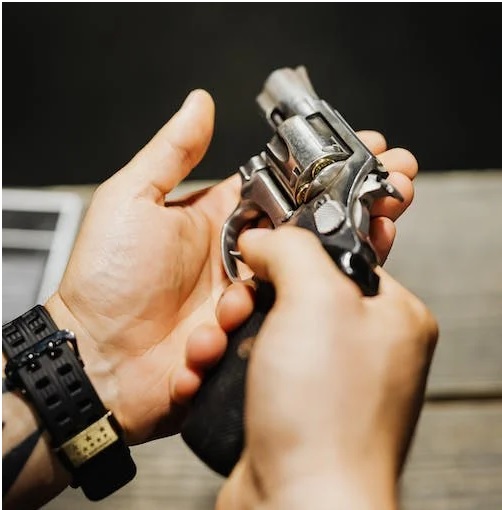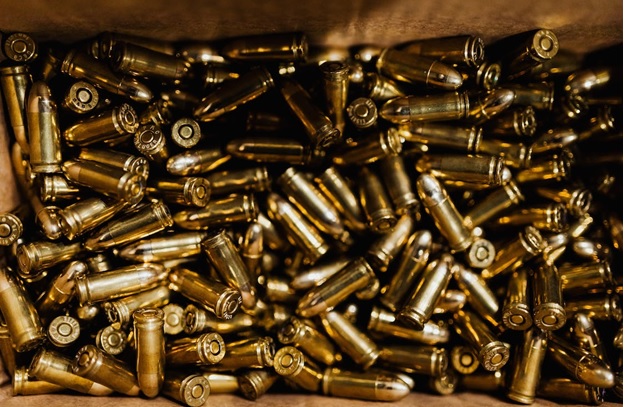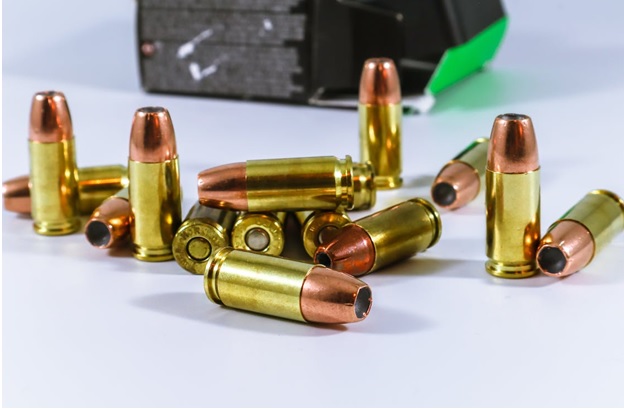Choosing a First Handgun (Plus Tips for First-Time Women Gun Owners)
Apr 18th 2023
Figures will vary according to the source you trust, but according to some accounts (including one recent study from Harvard University) women constitute nearly half of all first-time gun owners.
The influence of women in the shooting sports only grows by the year, with an increase in female first-time gun owners, and with the increasing popularity of social media stars (and Olympians) like Julia Stallings and Lena Miculek.
Given this, with it being Women’s History Month, and with the fact that there are, no doubt, more ladies out there who are about to buy their first-ever handgun, we figured we’d cover some of the things to consider for a first-time gun purchase.
1.Handgun Size and Weight
Handgun size and weight are two of the most important considerations to take into account when selecting a handgun for the first time.
Generally, handguns are subdivided into four main categories, based on size (and weight, in decreasing order):
- Full-size handguns: Fit comfortably in the grip without a magazine, and typically have a barrel 4.5” or greater in length. Some full-size pistols also accept double-stack magazines and so have greater capacity.
- Compact handguns: Also fit comfortably in the grip without a magazine; typically have a barrel between 3.5-4.5”
- Sub-compact handguns: Do not fit the grip comfortably without the mag inserted and usually have a barrel between 3 and 3.5”
- Pocket pistols: The smallest of the bunch, these do not fit comfortably in the grip without the mag inserted and usually have very short barrels, under 3”.
Before you jump to the conclusion that “pocket pistols are best for first time women shooters,” keep a few of the following things in mind.
- Pistol size is not related to pistol caliber. Some very small guns are chambered in big, hard-hitting rounds. This makes caliber a more important consideration for first time buyers than pistol size (see below).
- Lighter pistols are easier to carry, aim, and conceal, but not necessarily to shoot. Full-size handguns, by contrast, are heavier and harder to conceal and carry, but they are more stable and their greater mass helps absorb recoil.

2. Type/Action
Generally speaking, you are going to have to choose between a semi-automatic pistol and a revolver.
Revolvers are categorized into single-action, double-single, and double action only, or DAO.
Single-action only revolvers require the hammer to be manually cocked before each shot. These are probably not a good choice for self-defense for a first-time gun owners.
Double-single action revolvers enable the hammer to be cocked manually before firing (enabling a lighter trigger pull) while also enabling the trigger to both cock and fire the weapon. This enables double-singles to be fired rapidly.
DAO revolvers do not allow the hammer to be cocked manually, requiring the trigger to perform the action of cocking and firing the gun. Consequently, many DAO revolvers have hidden hammers (“hammerless” models). These are suitable for self-defense because a hammer spur can hang up on clothing when drawing, and hammerless models lack this feature.
Revolvers have both advantages and disadvantages. As far as advantages go, most revolvers lack fire controls like safeties which can be confusing to new shooters and which can result in fumbling. It’s also impossible to “forget to rack the slide” and have an empty chamber with a revolver (as long as all cylinders are loaded).

Revolvers, however, are extremely reliable, can enable very fast shooting, and do not jam. They are very simple to operate, which is a bonus. Revolvers are also easy to clean.
That said, most revolvers have fairly heavy trigger pulls that can be off-putting for some new shooters. They also lack the capacity of many semi-automatic pistols, as most revolvers have either 6 or 8 cylinders.
On the other hand, you have semi-automatic pistols, which are typically blowback, recoil, or gas-operated. Semi-automatic handguns, like revolvers, have a number of different advantages.
Among the advantages of semi-automatic handguns is that they tend to produce less recoil (their action systems absorb some of the recoil to feed the next round), they have lighter trigger pulls, and, since they are mag-fed, usually have greater capacities than most revolvers. Also, they are usually easier to reload.
Sub-compact and pocket semi-autos are also very light and have a very small footprint, making concealment easy.
On the flipside, most gas and recoil-operated handguns are more complex, more difficult to clean, and have safety controls that can be confusing for new gun owners. They also tend to be more expensive, can jam, and can be “ammo sensitive” (different loads can perform and feed very differently in semi-autos).
Whether a revolver or a semi-automatic is right for you will depend on the features that appeal most to you. Some swear by the reliability of revolvers for concealed carry and self-defense, others by the extended capacity of semi-automatics. Both are right in their own way.
3. Simplicity of Operation
As stated, simplicity of operation will depend on handgun design and action type.
While we would not advocate specifically for any one style or action over the other, as a general observation, for first-time gun owners, simple operation is probably better.
More complex action types have more moving parts and need to be cleaned more thoroughly in order to fire and feed smoothly.
Keep simplicity of operation in mind as you shop.
4. Caliber

After handgun size and action type, caliber is probably the most important consideration you will need to take when looking for your first gun.
Different calibers perform differently at different ranges and some are more suitable for self-defense than others.
For instance, if you are a smaller-framed shooter and know from experience that you are recoil sensitive, then a lighter caliber, like .22LR or .22WSM, might be better for your first handgun.
These rimfire cartridges are affordable and light-kicking, which makes them great for high-volume competition and target shooting. These are great cartridges to learn on, but most would agree they are not ideal for self-defense because they don’t produce adequate ballistics and stopping power.
If you are buying your first handgun for self-defense, a heavier caliber like .380 Auto, .40 S&W, or 9mm is a better choice. Some consider 9mm the king of personal defense rounds. It doesn’t produce a huge amount of recoil and it produces excellent stopping power. Also important is the fact that 9mm Luger ammo is affordable and widely available.
There are other popular cartridges that commonly show up on “best of” lists for personal defense rounds. Some of these are .40 S&W,.45 ACP, 10mm Auto, .357 Magnum, .38 Special, and .44 Remington Magnum. They are all excellent for self-defense, but some of them, especially 44 Magnum, .45 ACP, and 10mm Auto, are not good for recoil-sensitive shooters because they kick like a feral horse.
Keep in mind also there are are handgun parts that you can pair with many popular handguns - such as compensators - that will substantially cut felt recoil without adversely affecting shot power.
Adding a compensator to your 9mm or .40 S&W handgun will make it shoot a lot softer and smoother without cutting back on stopping power.
All things considered, keep the size and power of the caliber in mind. Larger, faster-shooting, harder-hitting calibers are better for self-defense, but can be harder to control and are not ideal for smaller framed shooters, whereas lighter-kicking cartridges are better for high-volume target shooting and competition.
5.Concealability
If you are going to carry the handgun, then concealment is another concern. Full-size handguns are not only heavier and more tiring to carry, but they are more likely to print (show through your clothing) and give themselves away. They’re also not as easily compatible with as wide a range of clothing.
You can absolutely carry a full-sized handgun, but for concealed carry, especially for your first gun, a smaller model, either a compact or subcompact, might be a better option.
6. Expandability
Another consideration you will need to make is expandability. Keep in mind that some handguns have rail sections above or below the slide, on which you can mount optics, lights or lasers. These might not be ideal for concealment, though.
Also keep in mind the availability of replacement handgun parts. A more common, more popular model, like a Glock or a Smith & Wession M&P Shield, or even a Rock Island 1911 pistol, is a good bet if only because there are so many compatible official and aftermarket handgun parts, shooting accessories, and holsters.
Keep in mind, on that latter note, that if you buy a popular model, it will be easier for you to find handgun parts for making repairs, too. Springs and small parts like ejectors and extractors fail easily, and when you need to replace them, you don’t want to have to jump through hoops to find compatible gun parts.
Also, in addition to the prevalence of pistol parts, buying a popular model in a common chambering will also safeguard your access to ammo and accessories, such as compatible holsters and attachments, so keep that in mind.
Buy the Right Ammo for the Shooting Discipline
In addition to settling on a caliber that’s suitable for your own needs and the shooting discipline that appeals to you, you’ll have to settle on the right type of ammo.
For self-defense, there are probably no better rounds than jacketed hollow point (JHP) bullets. Jacketed hollow-points offer controlled expansion and maximum energy transfer for superior stopping power when used on hostile targets. Hollow points also offer minimal risk of overpenetration.

On the flipside, full metal jacket, total metal jacket, and flat nose (also called wadcutter) bullets are best for target shooting and competition. They are consistent, accurate, and in the case of wadcutters, cut clean holes through targets, enabling easy, accurate scoring.
Keep that in mind when shopping for ammo for the first time.
Before Deciding: Visit the Range with a Friend
Our final tip is this. You can learn a lot by reading what’s published on the web, and folks at local gun shops will be more than happy to talk to you about your preferences and considerations. They can be some of your best resources when it comes to picking out your first handgun.
However, one of the best things you can do is visit a range with a friend or loved one that has shooting experience. They can teach you all about safe handling and, if they have more than one gun, can expose you to different models, action types, and calibers.
That way you can get familiar with models that appeal to you, learn what works for you and what doesn’t, and get a feel for how recoil-sensitive you are, which will impact your choice in caliber.
Good luck shopping, happy shooting, and be safe.

